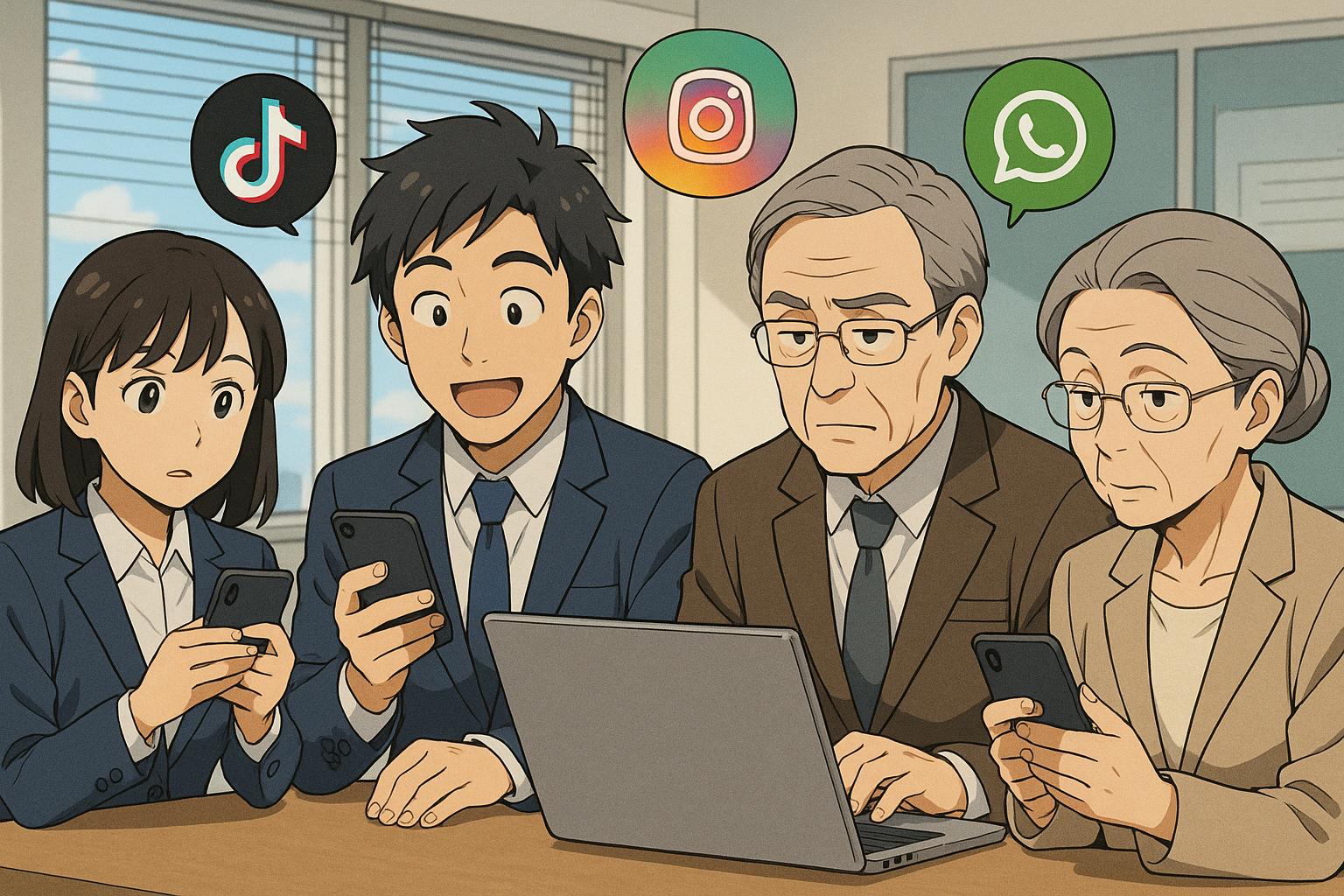The evolving landscape of workplace communication is being significantly reshaped by social media, with platforms like TikTok and Instagram setting new norms for interaction among professional cohorts. Research from The Adaptavist Group reveals that a staggering 83 percent of individuals report that their professional communication styles are directly influenced by social media trends. However, this shift is not without its complications; it has resulted in increased conflict and miscommunication, especially within an increasingly intergenerational workforce.
Key findings from The Adaptavist Group’s Workplace Communication Atlas, surveyed among 1,000 UK knowledge workers, highlight a generational divide in how social media impacts language and communication preferences. Younger generations, notably Gen Z and Millennials, are considerably more affected by social media influences compared to their older counterparts. For instance, over half (54 percent) of workers aged 50 and above indicated that social media trends have little to no effect on their language use, contrasting sharply with approximately a third of Gen Z (36 percent) and 39 percent of Millennials who report similar sentiments.
This generational disparity extends beyond merely how language is used; it encompasses the very platforms employees choose for communication. A significant 22 percent of the over-50 demographic reportedly do not engage with social media at all, while only 3 percent of Gen Z and 7 percent of Millennials share this sentiment. Preferences also diverge by age: older users flock to Facebook, while Millennials lean towards Instagram and Gen Z predominantly choose TikTok. Such discrepancies contribute to varied communication styles across the workplace, complicating collaborative efforts and creating potential misunderstandings.
Messaging apps are another avenue through which these generational distinctions manifest. Nearly half (44 percent) of Gen Z workers regularly utilise platforms like WhatsApp for workplace communication, as do 42 percent of Millennials. In stark contrast, only 28 percent of Boomers adopt these tools. Additionally, younger workers are more inclined to use LinkedIn messaging as a primary communication method, illustrating a fundamental shift in how professional relationships are navigated.
The blurring of personal and professional digital habits raises concerns regarding miscommunication. According to Adaptavist’s 2024 Digital Etiquette: Mind The Generational Gap Report, 90 percent of workers globally acknowledge that appropriate tools can bridge the communication chasm between generations. Nonetheless, the adaptation to these tools is fraught with challenges, as reported by 90 percent of Canadian workers who experience conflicts linked to digital tools, with 61 percent asserting that such disputes detrimentally impact productivity and collaboration.
Misinterpretation of tone, especially around punctuation and emojis, further complicates workplace conversations. Many older workers perceive emoji use as inappropriate or even lazy, which is at odds with the attitudes of younger cohorts who embrace emojis as friendly communication. A striking 29 percent of employees across all ages have encountered misunderstandings related to emoji use, while nearly half (46 percent) cite misinterpretations of tone or phrasing as their primary communication challenges.
Moreover, expectations regarding response times differ greatly across age groups. While over-50s generally anticipate replies by the end of the day, this expectation shifts to a near-instant reply culture among younger workers, with significant percentages of Gen Z and Millennials indicating they expect rapid responses. Such shifts not only reflect personal digital behaviour cultivated by rapid social media interactions but also signal a need for organisations to adapt their communication protocols.
Innovative methods of communication are also on the rise, with a sizeable minority of Gen Z (9 percent) and Millennials (8 percent) adopting asynchronous video tools, such as Atlassian’s Loom, for core communications. This trend indicates a potential new normal, as these platforms allow employees to communicate more flexibly and effectively, enhancing collaboration across age groups.
The integration of social media into workplace communication is not merely a trend; it reflects a profound shift in how generations connect, collaborate, and express themselves in professional environments. The diverse communication styles that emerge from this shift highlight the necessity for organisations to implement clear digital communication guidelines, ensuring that all employees, regardless of age, can engage effectively and harmoniously. In this new digital era, understanding and bridging generational differences will be essential for fostering an inclusive and productive workplace.
Reference Map
- Paragraphs 1, 2, 3, 4, 5, 6
- Paragraphs 5, 7
- Paragraph 5
- Paragraph 5
- Paragraph 5
- Paragraph 4
- Paragraph 4
Source: Noah Wire Services
